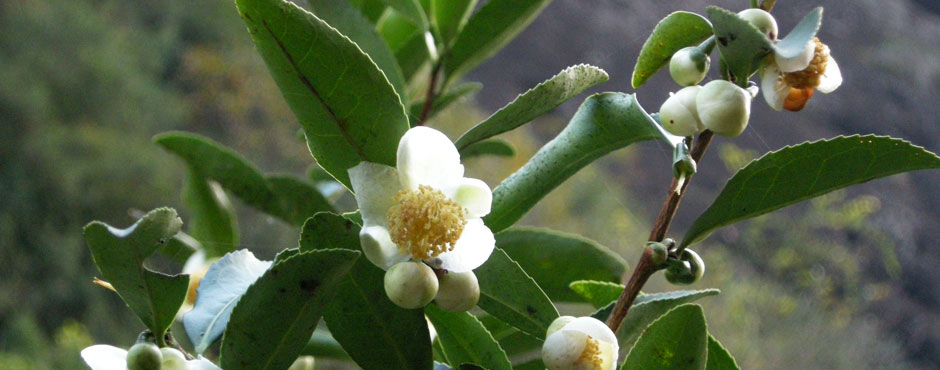No products
Product successfully added to your shopping cart
There are 0 items in your cart. There is 1 item in your cart.
The Spread all over the world
All the Tea that is available on the market today, originates from one plant: Camellia Sinensis. It is a small, evergreen shrub that can be 10 meters high. Growers, however, normally prefer to grow plants about one meter high, so that harvesting can be easily carried out. Its bark is rough, its leaves are dentate and are elliptical in shape. This plant belongs to the family called Theaceae and was named after the Latinized name of a Jesuit monk called Kamel, who was also a famous botanist; Kamel first brought Tea to Europe in the 17th century. In 1753 the Swedish botanist Carl von Linné (Linnaeus) studied the Tea plant, the first western botanist to do this. He named this plant Thea Sinensis, i. e. Chinese Tea. Linnaeus thought that Green Tea and Black Tea originated from two different plants. This turned out to be wrong. Today it is widely known that the different varieties of Teas do not correspond to as many Tea cultivars.
Tea varieties differ depending on the growing areas, the processing, harvesting time, the growing methods, soil and climatic conditions. This plant is native to China and precisely to the region of Yunnan, it is better-known as “Tea Tree”. Before the 17th century, Tea was grown and regularly consumed only in Korea and Japan. At that time Tea began to be consumed by those travelers who had come to know the healing powers of this drink: indeed Tea was anti inflammatory, it was considered as a traditional remedy against rheumatic ailments and a natural supplement. This particular use as a nutrient was especially appreciated by Chinese nomadic people, who traveled through harsh lands where there was shortage of food rich in vitamins and mineral salts; Green Tea turned out to be a good substitute.
They also used to add milk or butter in their Tea and this habit was taken on by western people. Later on, Tea was imported by India and Sri Lanka. It was an Englishman called Robert Fortune who first learned the secrets of Tea growing and processing. He first brought this methods to India , where a variety from Camilla Sinensis, called Assam was discovered; this Tea variety has big leaves and is very adaptable to the soils of the Indian plains. In India, a new practice was begun: Tea leaves began to be fermented thus obtaining the Black Tea which was widely consumed in western countries. Therefore, we have one Tea variety that is the Camilla Sinensis, but the different processing of its leaves in areas with particular environmental characteristics originates many different Tea varieties. Most growers use only three of all the existing varieties on the strength of their origin: Chinese, Assam and Cambodian . Nowadays Tea is widely grown in all continents except for Europe and North America.
Growing and Harvesting
The Tea that is available today on the market grows in the areas surrounding the Earth above the Equator. The best gardens are those cultivated below the height of 1,800 meters. Altitudes and mountain fog protect the plants against excessive sun exposure and create the ideal temperature and humidity conditions for the slow growing of their leaves and buds, thus keeping their tenderness intact. Many of the most famous Chinese Teas come from the famous Wuyi mountains (Fujan), Lushan (Jiangxi), Ernei (Sichuan) and Huangshan (Anhui). In warmer climates Tea plants blossom more frequently during the year and harvest can take place all the year round. At high altitudes the harvesting seasons changes. In many parts of China the harvesting season begins in April and ends in October. Also in Japan and north India harvesting is seasonal. The parts of the plant that are picked are the last two leaves and the terminal bud; for the preparation of the current Tea the fourth and the fifth leaves are also picked. They are picked by hand, using one’s nails. In India, Tea is grown in large plots of land where mechanical methods are mostly used. In China, on the other hand, Tea is produced mainly in small plantations; these are mostly family-run businesses that are located on the hills, where mechanization proves to be more difficult. Manual harvest is extremely important and until now mechanized harvesting has been unsuccessful.

